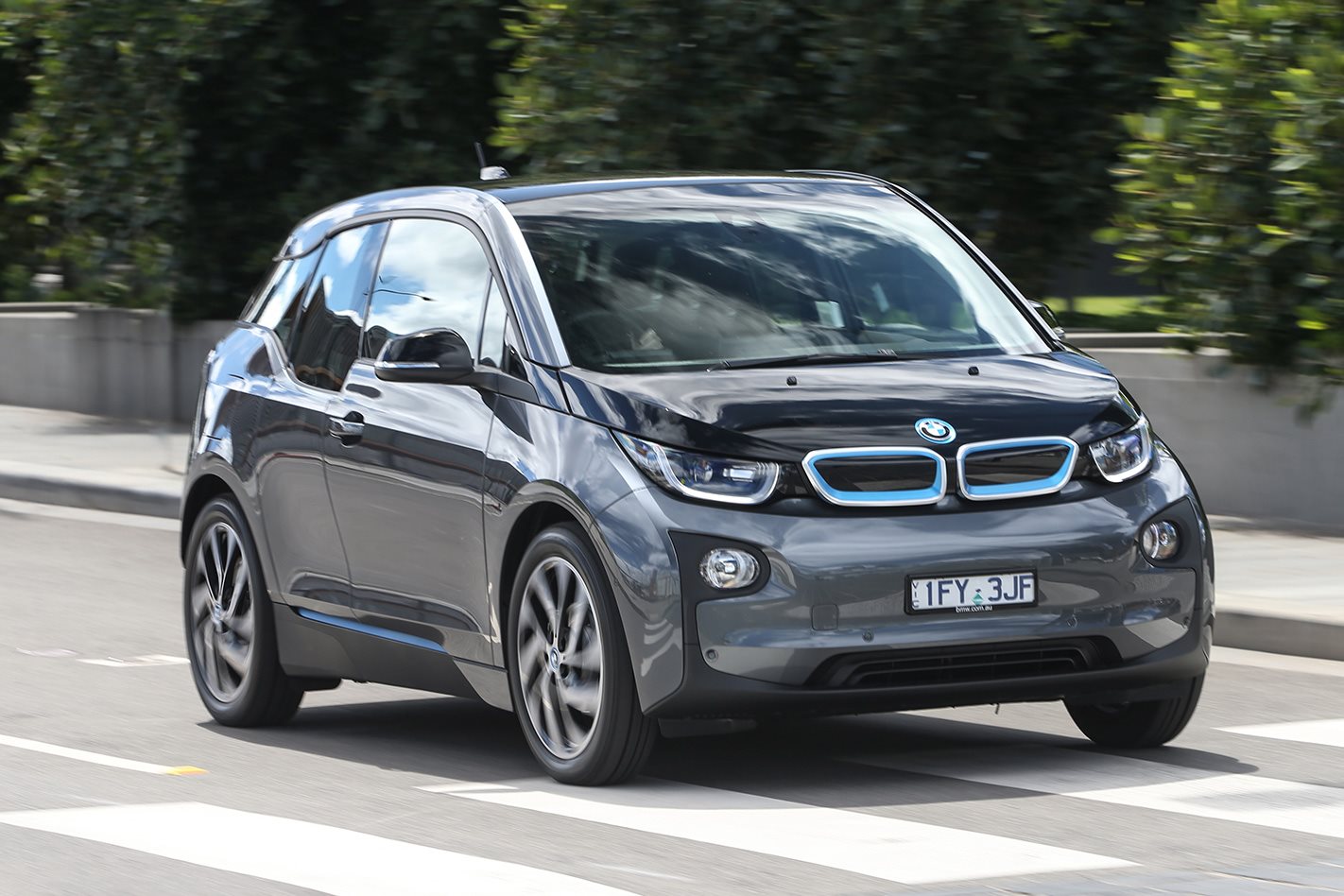Reviews

Gallery 1
TELL ME ABOUT THIS CAR
The i3 is BMW’s first fully electric car. It comes in two versions; a fully electric one, and a second fully electric one called the i3 REx that carries an on-board generator. A big change is a $2000, bigger 94Ah battery that means you can squeeze about 70km more range out of the car.
STRENGTHS
- More range – 200 kilometres of it – means less need to plug the i3 into the wall. BMW puts the average commute at 40-odd kilometres, so in theory Joe and Jane Average only need to recharge once a week.
- It also means less range anxiety – the name given to that fear that you’ll run out of charge before you get to where you need to be.
- Giving the battery half as much range again only costs an extra $2000, so it’s pretty good value. It pushes the price of the battery-only i3 up to $65,900
- For an extra $6000 you can add a 660cc two-cylinder motorbike engine hooked up to an alternator, which can recharge the battery on the fly. It uses an average of 0.6L/100km, spits out only 12 grams of globally warming carbon dioxide, and bumps up range to 330km – more than enough for a weekend escape to the country.

1
- The i3 has a tiny turning circle, just 9.86m.
- It’s fun to drive. The bright interior is an interesting mix of enviro-goodness and tech, visibility is excellent, and it sprints away from traffic lights.
- It’s safe. The i3 is built out of new-age materials including carbon fibre reinforced plastics, which is race car-like tech.
- The BMW i3 is the 2014 Wheels Car of the Year, meaning it has received Australia’s top motoring award. Everything Wheels liked about the i3 then is still a part of the car.
- Every 94Ah car comes with a DC charger that was an almost $800 option on the former base car. It feeds electricity directly into the battery rather than having to divert it through an AC convertor, reducing charge time to 80 percent capacity to less than 40 minutes.
- It has clever access to the cabin. The front door opens like a conventional one, but the rear doors are coach, meaning they swing out backwards.
- Each i3 comes with two Chargepoint cards that allow users to access public chargers. BMW picks up the tab where it can, so top-ups at public stations are almost all free.

1
- You can hook up to the i3 via an app on your smartphone to check driving range, battery charge status, and even heat the seats before you leave the warmth of your home or workplace.
- Maintenance is cheaper than other BMW-badged vehicles because there are fewer moving parts in an electric car. It will cost you $850 for the first five years or 80,000 kilometres, whichever comes first.
- BMW is still selling the 60Ah version of the i3 with a shorter 130km range alongside the new 94Ah one. If you want the extra range, make sure you buy the right one because they look exactly the same.
- If you want a 40-minute top-up, there’s only a single rapid DC charger in Sydney and two in Melbourne. More are coming, but unless one is near you, recharging via a public charger will take about four hours. If you need to use a normal household powerpoint, make that almost eight hours. And that’s only to 80 percent. If you want to top it to 100 percent via the wall plug, put aside 14 hours.
- Those battery ranges are for real-world driving conditions, but we’d still err on the side of optimism. We’re humans, we don’t drive very efficiently by nature, and we like to run air-con systems on hot days and heaters in winter. They all drain power at varying rates that will eat into driving distance.

1
- Don’t expect drivers who jump in behind the wheel for the first time to know what they’re doing. The steering wheel, brake and accelerator are all conventional, but starting the i3, selecting drive, and then shutting it all down again at the end takes a bit of familiarity.
- Braking is strange. The electrical system will try and scavenge as much braking power as electricity as possible, meaning the i3 will sometimes brake a lot harder than the pressure you put on the pedal. It will also start to slow down markedly if you lift off the accelerator.
- There are only four seats. If you have three kids, shop around for something else.
- It’s somewhat expensive for a four-seat hatchback. The surfaces you see and touch may be made from recycled plastic and reek of quality, but they’re hard, not soft. The front seats are manual-adjust, not electric. You could buy a decent conventional hatchback with more seats and features, and for less money.
- If you have kids and are on the school run, you’ll need to open the front doors to let anyone in the back seats out.
- The ride is fine around town, but the tall, narrow wheels make potholes feel like craters and speed humps feel like planets. Best avoid them.
One: The $39,990 Nissan Leaf. It looks more conventional, is cheaper, has a Tron-like user interface and if you think the i3 steps off the line quickly, the Leaf also feels sharp. But it has a much smaller battery, weighs more and therefore will only go about 100km on an 80 per cent charge.



